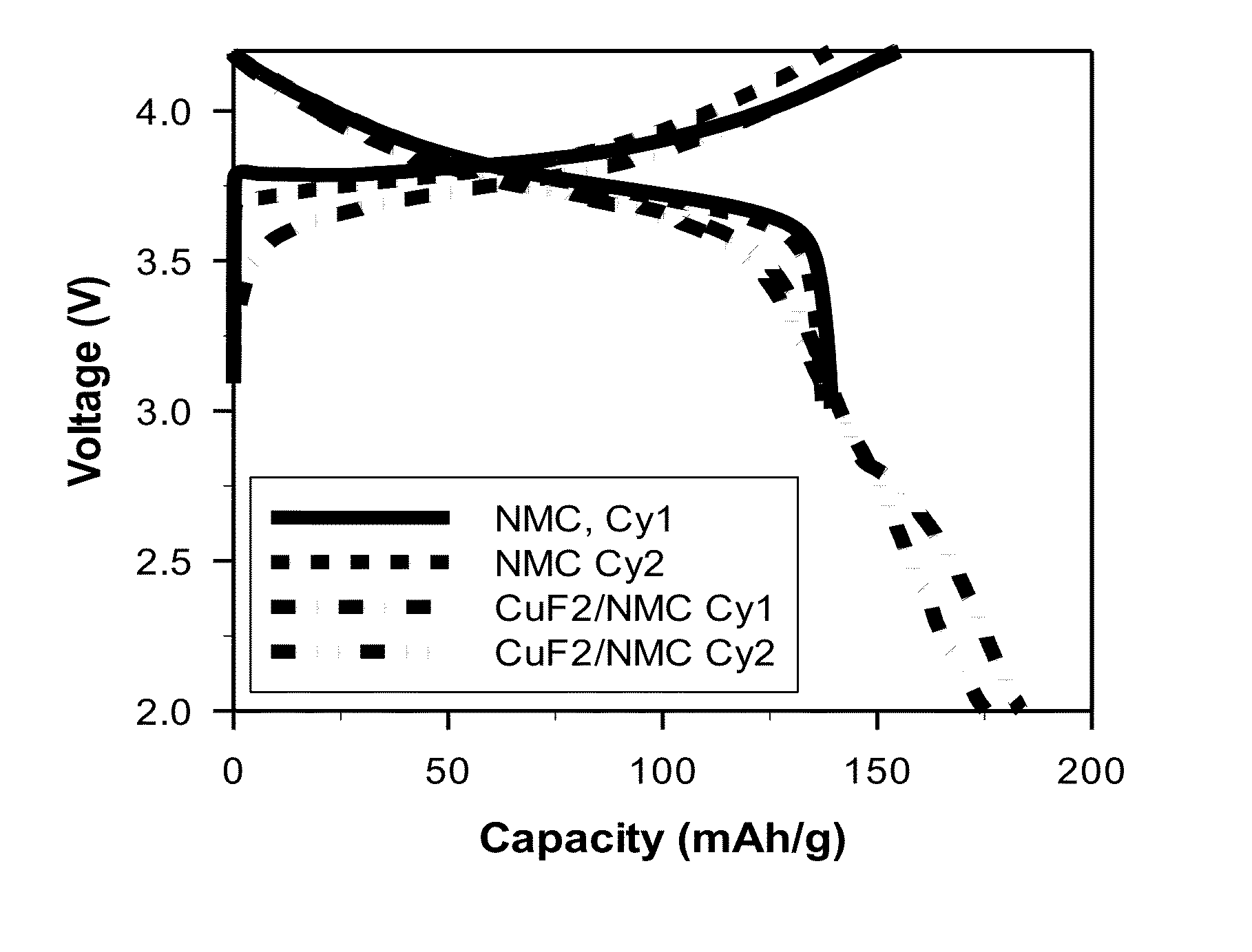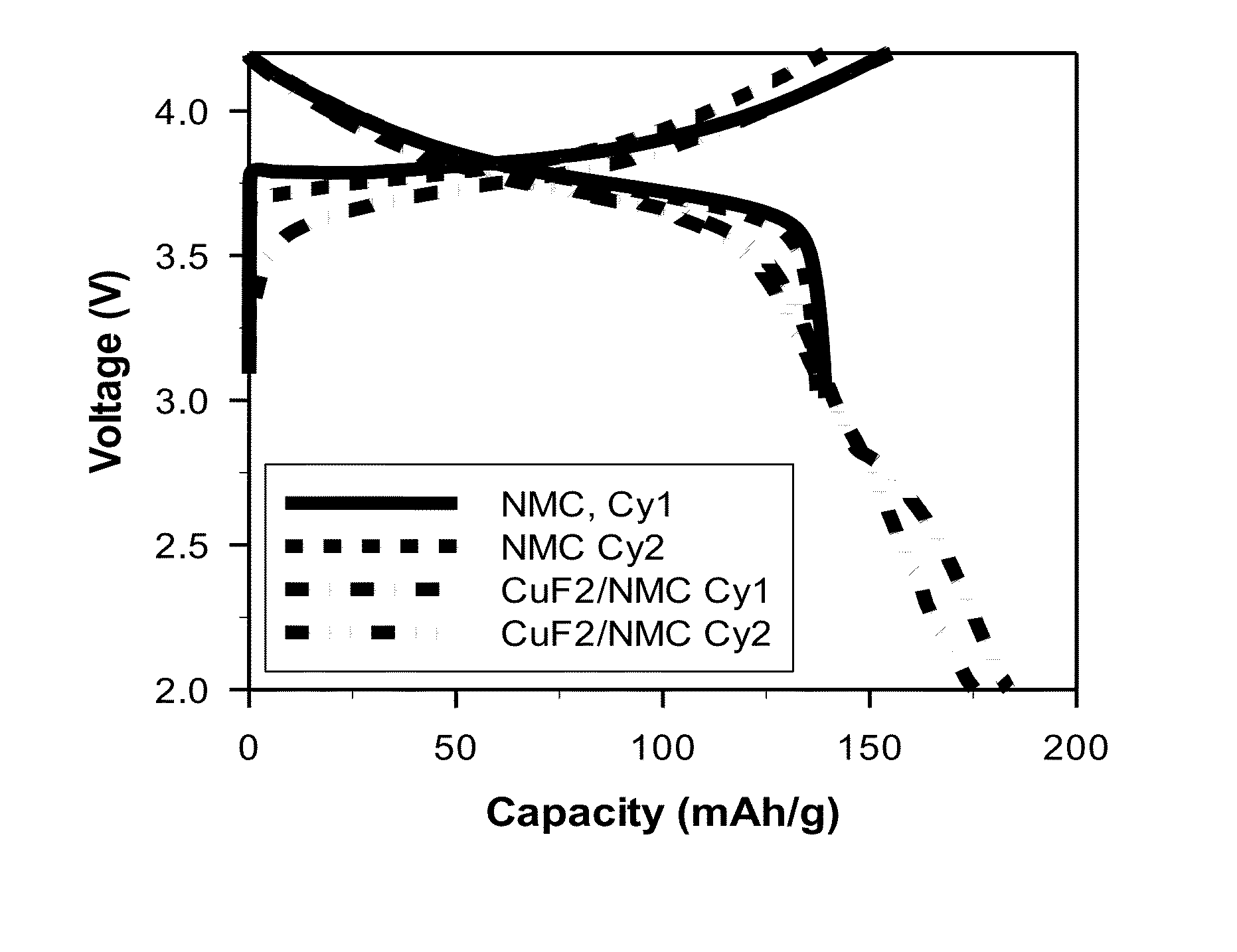High energy materials for a battery and methods for making and use
a battery and high-energy technology, applied in the field of battery technology, can solve the problems of limited widespread use and realization of performance potential poor rate performance, and low efficiency of metal fluoride materials
- Summary
- Abstract
- Description
- Claims
- Application Information
AI Technical Summary
Benefits of technology
Problems solved by technology
Method used
Image
Examples
example 1
Fabrication of Composite Electrodes Using Electrochemically Active Materials
[0043]Materials and Synthetic Methods. Hybrid cathodes composed of a metal fluoride and an electrochemically active conductive matrix were synthesized using a process that includes both milling and annealing. Typically, metal fluoride precursors (e.g., CuF2, FeF3) were milled together with the electrochemically active cathode material (e.g., LFP, NMC), followed by an annealing step. The temperature of the annealing step depends upon the choice of metal fluoride, but is typically performed at 200 degrees C.
[0044]Electrode Formulation.
[0045]Cathodes were prepared using a formulation composition of 85 wt % active material, 7.5 wt % binder, and 7.5 wt % conductive additive according to the following formulation method: 198 mg PVDF (Sigma Aldrich) was dissolved in 15 mL NMP (Sigma Aldrich) overnight. 198 mg of conductive additive was added to the solution and allowed to stir for several hours. 150 mg of the hybri...
example 2
Electrochemical Characterization of Electrochemical Cells Containing Composite Electrodes
[0046]All batteries were assembled in a high purity argon filled glove box (M-Braun, O2 and humidity contents 6 in 1:2 EC: EMC electrolyte. Electrodes and cells were electrochemically characterized at 25 degrees C. with a constant current C / 50 charge and discharge rate between 4.2 V and 2.0 V. No constant voltage step was included.
PUM
| Property | Measurement | Unit |
|---|---|---|
| energy densities | aaaaa | aaaaa |
| electrochemical potentials | aaaaa | aaaaa |
| electrochemical potential | aaaaa | aaaaa |
Abstract
Description
Claims
Application Information
 Login to View More
Login to View More - R&D
- Intellectual Property
- Life Sciences
- Materials
- Tech Scout
- Unparalleled Data Quality
- Higher Quality Content
- 60% Fewer Hallucinations
Browse by: Latest US Patents, China's latest patents, Technical Efficacy Thesaurus, Application Domain, Technology Topic, Popular Technical Reports.
© 2025 PatSnap. All rights reserved.Legal|Privacy policy|Modern Slavery Act Transparency Statement|Sitemap|About US| Contact US: help@patsnap.com


